Charles M. Kozierok The TCP-IP Guide
Подождите немного. Документ загружается.


The TCP/IP Guide - Version 3.0 (Contents) ` 841 _ © 2001-2005 Charles M. Kozierok. All Rights Reserved.
☯ Data Handling and Packaging: TCP defines a mechanism by which applications are
able to send data to it from higher layers. This data is then packaged into messages to
be sent to the destination TCP software. The destination software unpackages the
data and gives it to the application on the destination machine.
☯ Data Transfer: Conceptually, the TCP implementation on a transmitting device is
responsible for the transfer of packaged data to the TCP process on the other device.
Following the principle of layering, this is done by having the TCP software on the
sending machine pass the data packets to the underlying network-layer protocol,
which again normally means IP.
☯ Providing Reliability and Transmission Quality Services: TCP includes a set of
services and features that allow an application to consider the sending of data using
the protocol to be “reliable”. This means that normally, a TCP application doesn't have
to worry about data being sent and never showing up, or arriving in the wrong order. It
also means other common problems that might arise if IP were used directly are
avoided.
☯ Providing Flow Control and Congestion Avoidance Features: TCP allows the flow
of data between two devices to be controlled and managed. It also includes features to
deal with congestion that may be experienced during communication between
devices.
Clearly, TCP is responsible for a fairly significant number of key functions. This list may not
seem that impressive. The reason is that this is just a high-level look at the protocol, and
these functions are summarized in the list above; when we look at them in detail we will see
that each one actually involves a rather significant amount of work for TCP to do.
Functions Not Performed By TCP
TCP does so much that sometimes it is described as doing “everything” an application
needs to use an internetwork. I may even have been guilty of this myself. However, the
protocol doesn't do everything. It has limitations and certain areas that its designers specif-
ically did not address. Among the notable functions TCP does not perform include:
☯ Specifying Application Use: TCP defines the transport protocol. It does not describe
specifically how applications are to use TCP.
☯ Providing Security: TCP does not provide any mechanism for ensuring the authen-
ticity or privacy of data it transmits. If these are needed they must be accomplished
using some other means, such as IPSec, for example.
☯ Maintaining Message Boundaries: TCP sends data as a continuous stream, not as
discrete messages. It is up to the application to specify where one message ends and
the next begins.
☯ Guaranteeing Communication: Wait a minute… isn't the whole point of TCP
supposed to be that it guarantees data will get to its destination? Well, yes and no. ☺
TCP will detect unacknowledged transmissions and re-send them if needed. However,
in the event of some sort of problem that prevents reliable communication, all TCP can
do is “keep trying”. It can't make any guarantees because there are too many things
out of its control. Similarly, it can attempt to manage the flow of data, but cannot
resolve every problem.

The TCP/IP Guide - Version 3.0 (Contents) ` 842 _ © 2001-2005 Charles M. Kozierok. All Rights Reserved.
This last point might seem a bit pedantic, but is important to keep in mind, especially since
the tendency is to think of TCP as somewhat “bulletproof”. The overall success of communi-
cation depends entirely on the underlying internetwork and the networks that constitute it. A
chain is as strong as its weakest link, and if there is a problem at the lower layers, nothing
TCP can do will guarantee successful data transfer.
Key Concept: TCP provides reliable communication only by detecting failed trans-
missions and re-sending them. It cannot guarantee any particular transmission,
because it relies on IP, which is unreliable. All it can do is keep trying if an initial
delivery attempt fails.
TCP Characteristics: How TCP Does What It Does
In the preceding topic we began our high-level look at TCP by examining the most
important functions the protocol performs—as well as a few that it does not. In many ways,
it is more interesting to look at how TCP does its job than the functions of the job itself. By
examining the most important attributes of TCP and its operation, we can get a better
handle on the way TCP works. We can also see the many ways that it contrasts to its
simpler transport layer sibling, UDP.
TCP Characteristics
The following are the ways that I would best describe the Transmission Control Protocol
and how it performs the functions described in the preceding topic:
☯ Connection-Oriented: TCP requires that devices first establish a connection with
each other before they send data. The connection creates the equivalent of a circuit
between the units, and is analogous to a telephone call. A process of negotiation
occurs to establish the connection, ensuring that both devices agree on how data is to
be exchanged.
☯ Bidrectional: Once a connection is established, TCP devices send data bidirec-
tionally. Both devices on the connection can send and receive, regardless of which of
them initiated the connection.
☯ Multiply-Connected and Endpoint-Identified: TCP connections are identified by the
pair of sockets used by the two devices in the connection. This allows each device to
have multiple connections opened, either to the same IP device or different IP devices,
and to handle each connection independently without conflicts.
☯ Reliable: Communication using TCP is said to be reliable because TCP keeps track of
data that has been sent and received to ensure it all gets to its destination. As we saw
in the previous topic, TCP can't really “guarantee” that data will always be received.
However, it can guarantee that all data sent will be checked for reception, and
checked for data integrity, and then retransmitted when needed. So, while IP uses
“best effort” transmissions, you could say TCP tries harder, as the old rent-a-car
commercial goes.

The TCP/IP Guide - Version 3.0 (Contents) ` 843 _ © 2001-2005 Charles M. Kozierok. All Rights Reserved.
☯ Acknowledged: A key to providing reliability is that all transmissions in TCP are
acknowledged (at the TCP layer—TCP cannot guarantee that all such transmissions
are received by the remote application). The recipient must tell the sender “yes, I got
that” for each piece of data transferred. This is in stark contrast to typical messaging
protocols where the sender never knows what happened to its transmission. As we will
see, this is fundamental to the operation of TCP as a whole.
☯ Stream-Oriented: Most lower-layer protocols are designed so that to use them,
higher-layer protocols must send them data in blocks. IP is the best example of this;
you send it a message to be formatted and it puts that message into a datagram. UDP
is the same. In contrast, TCP allows applications to send it a continuous stream of
data for transmission. Applications don't need to worry about making this into chunks
for transmission; TCP does it.
☯ Data-Unstructured: An important consequence of TCP's stream orientation is that
there are no natural divisions between data elements in the application's data stream.
When multiple messages are sent over TCP, applications must provide a way of differ-
entiating one message (data element, record, etc.) from the next.
☯ Data-Flow-Managed: TCP does more than just package data and send it as fast as
possible. A TCP connection is managed to ensure that data flows evenly and
smoothly, with means included to deal with problems that arise along the way.
Key Concept: To summarize TCP’s key characteristics, we can say that it is
connection-oriented, bidirectional, multiply-connected, reliable, acknowledged,
stream-oriented and flow-managed.
The Robustness Principle
There's one more thing about TCP that is more an indication of the general maxim behind
its creation than a particular characteristic of its operation. The TCP standard says that TCP
follows the robustness principle, which is described thusly: “be conservative in what you do;
be liberal in what you accept from others”. It means that every TCP implementation tries to
avoid doing anything that would cause a problem for another device's TCP layer, while at
the same time also trying to anticipate problems another TCP may cause and deal with
them gracefully.
This principle represents a “belt and suspenders” approach that helps provide extra
protection against unusual conditions in TCP operation. In fact, this general principle is
applied to many other protocols in the TCP/IP suite, which is part of the reason why it has
proven so capable over the years. It allows TCP and other protocols to often deal with even
unanticipated problems that might show up in the difficult environment of a large inter-
network such as the Internet.

The TCP/IP Guide - Version 3.0 (Contents) ` 844 _ © 2001-2005 Charles M. Kozierok. All Rights Reserved.
Putting TCP's Performance In Perspective
Also, while we are on the subject of TCP’s characteristics, I want to reinforce one other
thing I said in the overview of TCP and UDP: TCP has many attributes but one of them is
not “slow”. It is true that UDP is usually used by applications for performance reasons when
they don't want to deal with the overhead TCP incorporates for connections and reliability.
That, however, should not lead one to conclude that TCP is glacial, by any means. It is in
fact quite efficient—were it not, it's unlikely it would have ever achieved such widespread
use.
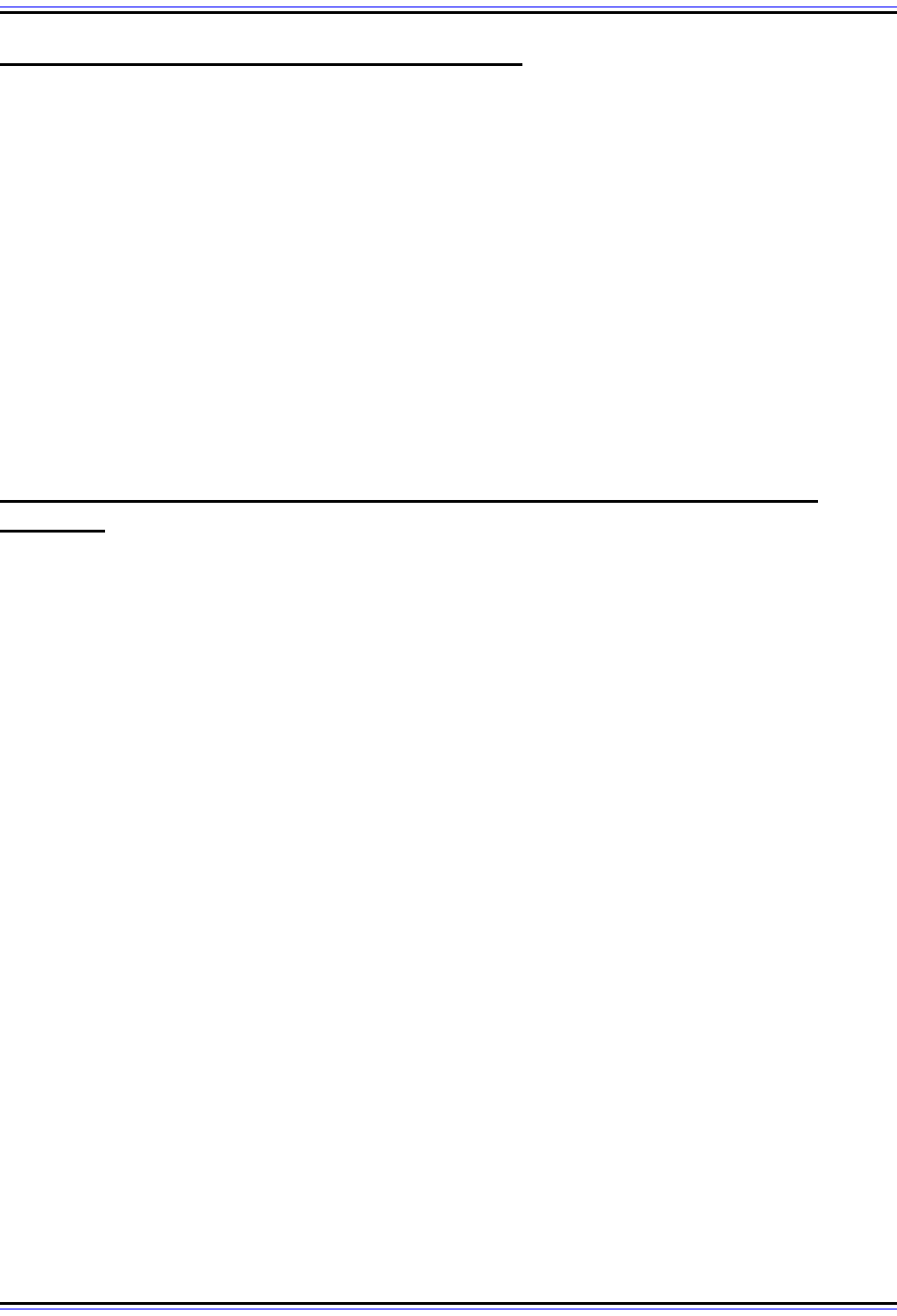
The TCP/IP Guide - Version 3.0 (Contents) ` 845 _ © 2001-2005 Charles M. Kozierok. All Rights Reserved.
TCP Fundamentals and General Operation
Many people have a difficult time really understanding how the Transmission Control
Protocol works. (After spending dozens of hours writing almost 100 pages on the protocol, I
am quite sympathetic.) I think a main reason for the difficulty in absorbing TCP is that too
many descriptions of the protocol quickly jump from a brief introduction straight into the
mind-boggling details of TCP's operation. The problem is that TCP has a very particular
way of doing certain things. Its operation is built around a few very important fundamentals
that it is essential to understand before the details of TCP operation will make much sense.
In this section I describe some of the key operating fundamentals of TCP. I begin with a
discussion of how TCP handles data, and introduce the concepts of streams, segments and
sequences. I then describe the very important TCP sliding window system, used for
acknowledgment, reliability and data flow control. I discuss how TCP uses ports, and how
connections are identified. I also describe the most important applications that use TCP and
what ports they use for server applications.
TCP Data Handling and Processing: Streams, Segments and Sequence
Numbers
One of the “givens” in the operation of most of the protocols we find at upper layers in the
OSI Reference Model is that they are oriented around the use of messages. These
messages are analogous to a written letter in an envelope, containing a specific piece of
information. They are passed from higher layers down to lower ones, where they are
encapsulated in the lower layer's headers (like putting them in another envelope) and then
passed down further until they are actually sent out at the physical layer.
A good example of this can be seen in looking at the User Datagram Protocol, TCP’s
transport layer peer. To use UDP, an application passes it a distinct block of data that is
usually fairly short. The block is packaged into a UDP message, then sent to IP. IP packs
the message into an IP datagram and eventually passes it to a layer two protocol such as
Ethernet. There it is placed into a frame and sent to layer one for transmission.
Increasing the Flexibility of Application Data Handling: TCP's Stream Orientation
The use of discrete messaging is pretty simple, and it obviously works well enough since
most protocols make use of it. However, it is inherently limiting, because it forces applica-
tions to create discrete blocks of data in order to communicate. There are many
applications that need to send information continuously in a manner that doesn't lend itself
well to creating “chunks” of data. Others need to send data in chunks that are so large that
they could never be sent as a single message at the lower layers anyway.
To use a protocol like UDP, many applications would be forced to artificially divide their data
into messages of a size that has no inherent meaning to them. This would immediately
introduce new problems requiring more work for the application. It would have to keep track
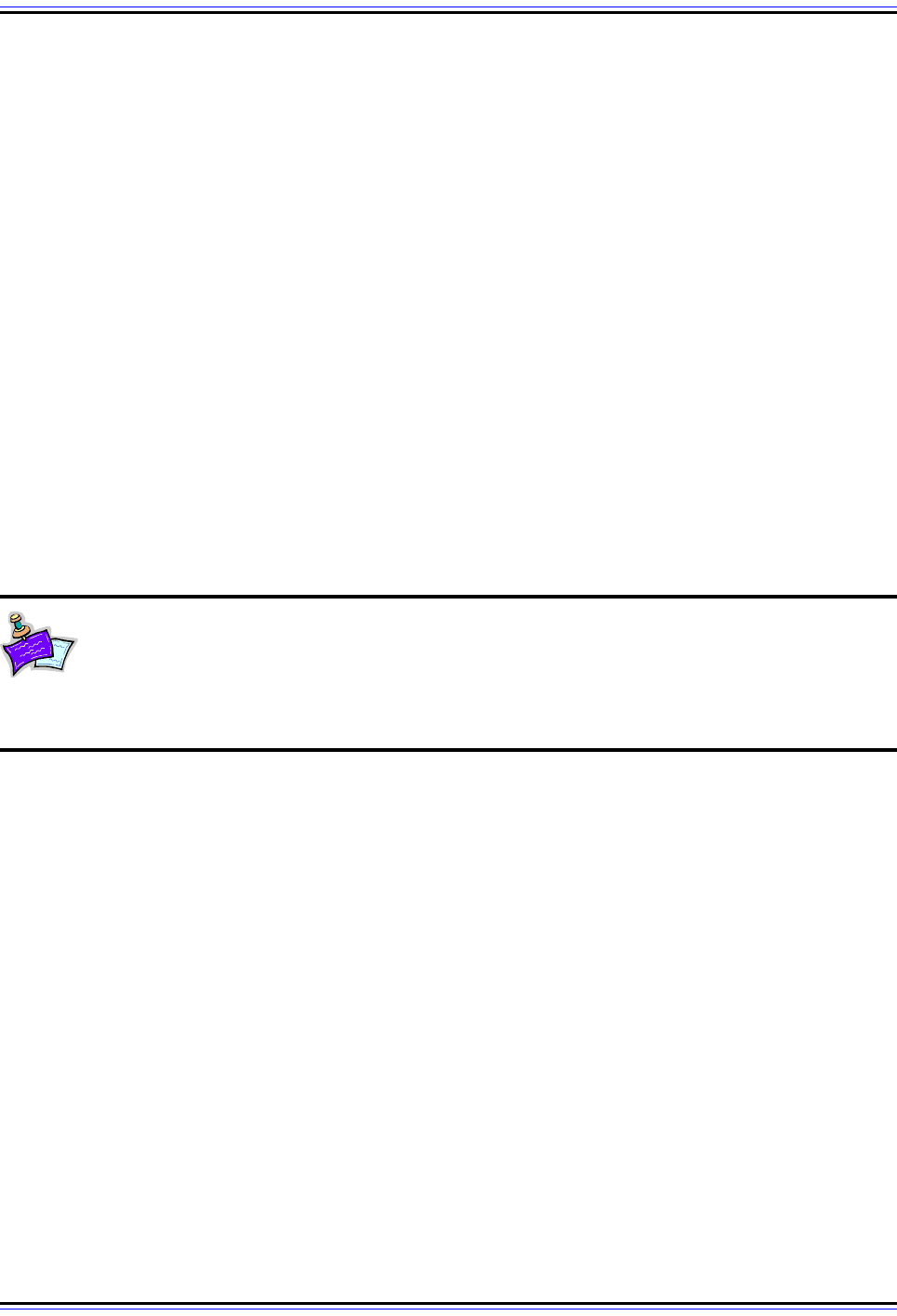
The TCP/IP Guide - Version 3.0 (Contents) ` 846 _ © 2001-2005 Charles M. Kozierok. All Rights Reserved.
of what data is in what message, and replace any that were lost. It would need to ensure
that the messages could be reassembled in the correct order, since IP might deliver them
out of order.
Of course, one could program applications to do this, but these functions are already ones
that TCP is charged with taking care of, so it would make little sense. Instead, the designers
of TCP took the very smart approach of generalizing TCP so it could accept application
data of any size and structure, without requiring that it be in discrete pieces. More specifi-
cally, TCP is said to treat data coming from an application as a stream; thus, the description
of TCP as stream-oriented. Each application sends the data it wishes to transmit as a
steady stream of octets (bytes). It doesn't need to carve them into blocks, or worry about
how lengthy streams will get across the internetwork. It just “pumps bytes” to TCP.
TCP Data Packaging: Segments
Of course, TCP must take these bytes and send them using a network-layer protocol,
meaning the Internet Protocol. IP is a message-oriented protocol, not stream-oriented.
Thus, we have simply “passed the buck” to TCP, which must take the stream from the appli-
cation and divide it into discrete messages for IP. These messages are called TCP
segments.
Note: As an aside, this is one of the most confusing data structure names in the
world of networking. From a dictionary definition standpoint, referring to a piece of
a stream as a segment is sensible, but most people working with networks don't
think of a message as being a “segment”. In the industry, the term also refers to a length of
cable or a part of a local area network, among other things, so watch out for that.
TCP segments are treated by IP like all other discrete messages for transmission. They are
placed into IP datagrams and transmitted to the destination device. The recipient
unpackages the segments and passes them to TCP, which converts them back to a byte
stream to send to the application. This process is illustrated in Figure 202.
The TCP layer on a device accumulates data it receives from the application process
stream. On regular intervals, it forms segments to be transmitted using IP. The size of the
segment is controlled by two primary factors. The first issue is that there is an overall limit to
the size of a segment, chosen to prevent unnecessary fragmentation at the IP layer. This is
governed by a parameter called the maximum segment size (MSS), which is determined
during connection establishment. The second is that TCP is designed so that once a
connection is set up, each of the devices tells the other how much data it is ready to accept
at any given time. If this is lower than the MSS value, a smaller segment must be sent. This
is part of the sliding window system described in the next topic.
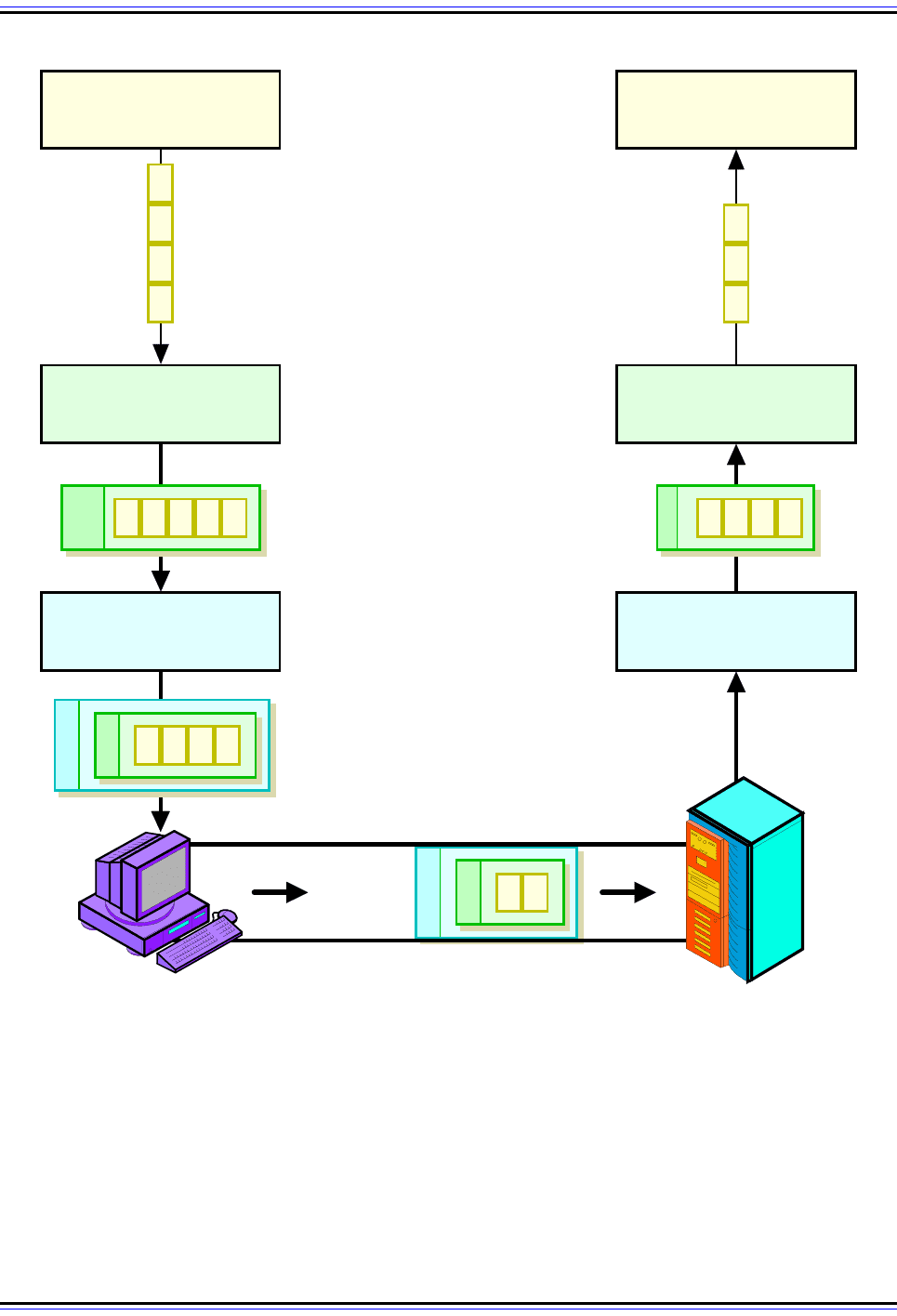
The TCP/IP Guide - Version 3.0 (Contents) ` 847 _ © 2001-2005 Charles M. Kozierok. All Rights Reserved.
Figure 202: TCP Data Stream Processing and Segment Packaging
TCP is different from most protocols because it does not require applications that use it to send data to it in
messages. Once a TCP connection is set up, an application protocol can send TCP a steady stream of bytes
that does not need to conform to any particular structure. TCP packages these bytes into segments that are
sized based on a number of different parameters. These segments are passed to IP, where they are encapsu-
lated into IP datagrams and transmitted. The process is reversed by the receiving device: segments are
removed from IP datagrams, then the bytes are taken from the segments and passed up to the appropriate
recipient application protocol as a byte stream.
Server
Transmission Control
Protocol (TCP)
1
2
3
4 5 6 7
19
8 9
10 11
Application Protocol
Internet Protocol (IP)
12 13
15 16 17 18
20
21
22
Client
Application Protocol
Transmission Control
Protocol (TCP)
Byte Stream
Sent By
Application
Internet Protocol (IP)
Bytes Packaged
Into Segment
14
Segme nt
Encapsulated
Into IP Datagram
IP Datagram
In Transit
Segme nt
Removed From
IP Datagram
Bytes Unpackaged
From TCP Segment
And Passed To
Application
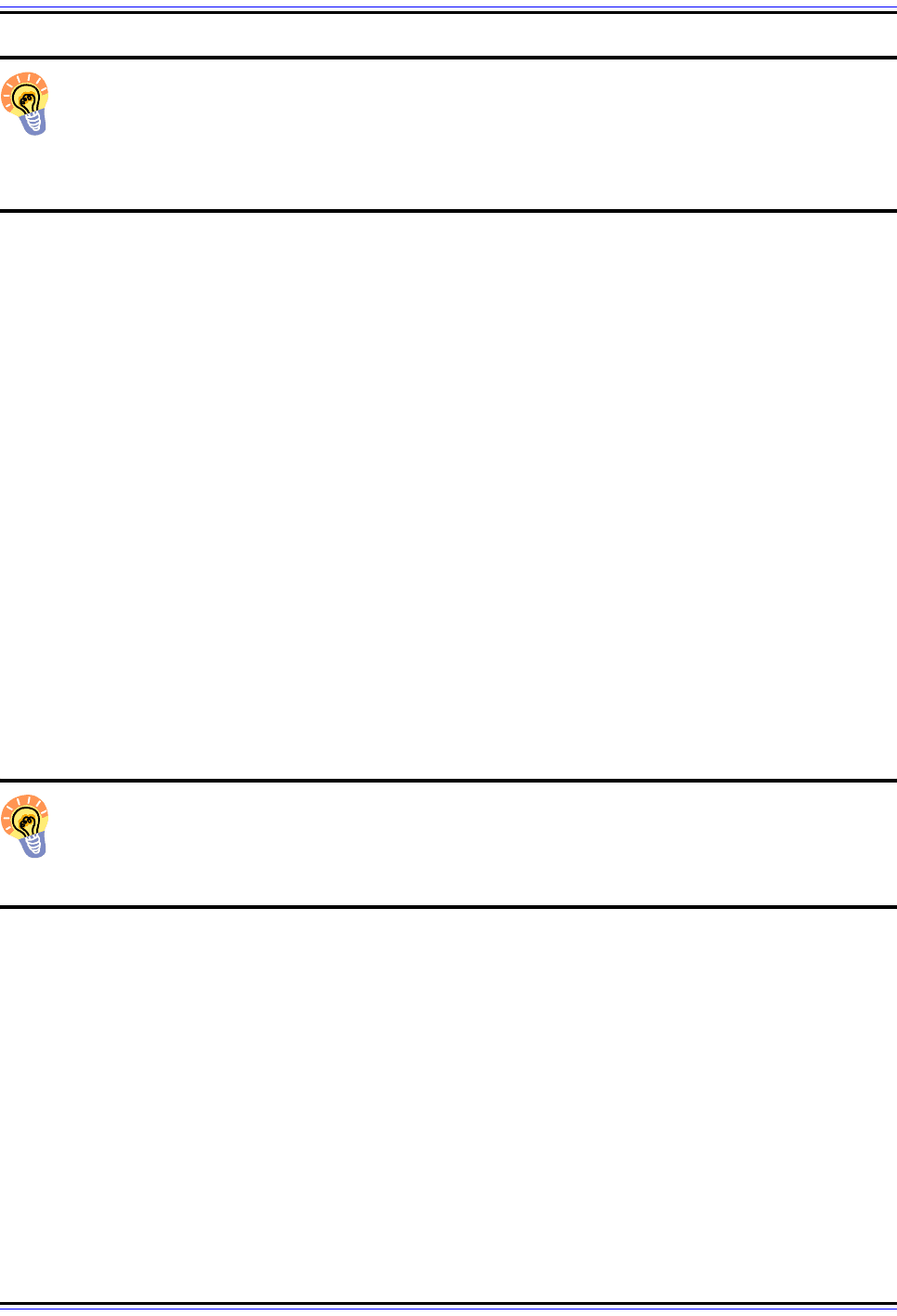
The TCP/IP Guide - Version 3.0 (Contents) ` 848 _ © 2001-2005 Charles M. Kozierok. All Rights Reserved.
Key Concept: TCP is designed to have applications send data to it as a stream of
bytes, rather than requiring fixed-size messages to be used. This provide maximum
flexibility for a wide variety of uses, because applications don’t need to worry about
data packaging, and can send files or messages of any size. TCP takes care of packaging
these bytes into messages called segments.
TCP Data Identification: Sequence Numbers
The fact that TCP treats data coming from an application as a stream of octets has a couple
of very significant implications on the operation of the protocol. The first is related to data
identification. Since TCP is reliable, it needs to keep track of all the data it receives from an
application so it can make sure it is all received by the destination. Furthermore, it must
make sure the data is received in the order it was sent, and must retransmit any lost data.
If data were conveyed to TCP in block-like messages, it would be fairly simple to keep track
of the data by adding an identifier to each message. Since TCP is stream-oriented,
however, that identification must be done for each byte of data! This may seem surprising,
but it is actually what TCP does, through the use of sequence numbers. Each byte of data is
assigned a sequence number which is used to keep track of it through the process of trans-
mission, reception and acknowledgment (though in practice, blocks of many bytes are
managed using the sequence numbers of bytes at the start and end of the block). These
sequence numbers are used to ensure that data sent in segments is reassembled into the
original stream of data transmitted by the sending application. They are required to
implement the sliding window system that enables TCP to provide reliability and data flow
control.
Key Concept: Since TCP works with individual bytes of data rather than discrete
messages, it must use an identification scheme that works at the byte level to
implement its data transmission and tracking system. This is accomplished by
assigning each byte TCP processes a sequence number.
The Need For Application Data Delimiting
The other impact of TCP treating incoming data as a stream is that data received by an
application using TCP is unstructured. For transmission, a stream of data goes into TCP on
one device, and on reception, a stream of data goes back to the application on the receiving
device. Even though the stream is broken into segments for transmission by TCP, these
segments are TCP-level details that are hidden from the application. So, when a device
wants to send multiple pieces of data, TCP provides no mechanism for indicating where the
“dividing line” is between the pieces, since TCP doesn't examine the meaning of the data at
all. The application must provide a means for doing this.
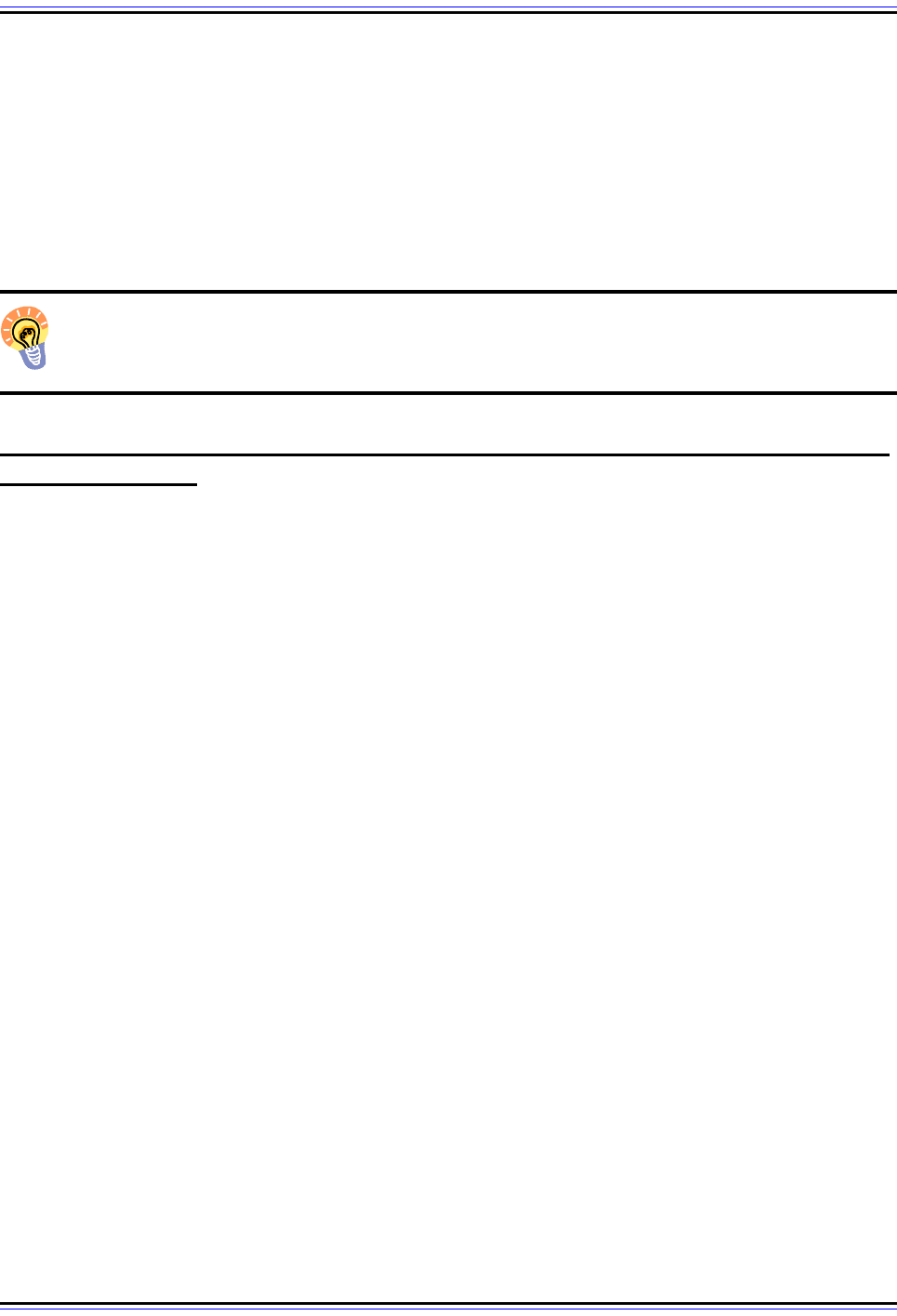
The TCP/IP Guide - Version 3.0 (Contents) ` 849 _ © 2001-2005 Charles M. Kozierok. All Rights Reserved.
Consider for example an application that is sending database records. It needs to transmit
record #579 from the Employees database table, followed by record #581 and record #611.
It sends these records to TCP, which treats them all collectively as a stream of bytes. TCP
will package these bytes into segments, but in a manner the application cannot predict. It is
possible that each will end up in a different segment, but more likely they will all be in one
segment, or part of each will end up in different segments, depending on their length. The
records themselves must have some sort of explicit markers so the receiving device can tell
where one record ends and the next starts.
Key Concept: Since applications send data to TCP as a stream of bytes and not
prepackaged messages, each application must use its own scheme to determine
where one application data element ends and the next begins.
TCP Sliding Window Acknowledgment System For Data Transport, Reliability
and Flow Control
What differentiates the Transmission Control Protocol from simpler transport protocols like
UDP is the quality of the manner in which it sends data between devices. Rather than just
sticking data in a message and saying “off you go”, TCP carefully keeps track of the data it
sends and what happens to it. This management of data is required to facilitate two key
requirements of the protocol:
☯ Reliability: Ensuring that data that is sent actually arrives at its destination, and if not,
detecting this and re-sending the data.
☯ Data Flow Control: Managing the rate at which data is sent so that it does not
overwhelm the device that is receiving it.
To accomplish these tasks, the entire operation of the protocol is oriented around
something called the sliding window acknowledgment system. It is no exaggeration to say
that comprehending how sliding windows works is critical to understanding just about
everything else in TCP. It is also, unfortunately, a bit hard to follow if you try to grasp it all at
once, which means many people's eyes glaze over trying to make sense of it.
Since you can’t really get TCP without understanding sliding windows, I wanted to make
sure that I explained the mechanism thoroughly—and without assuming you already under-
stand a great deal, as most references do. For this reason I am going to start with the
concepts behind sliding windows and eventually explain how the technique works in
general terms and why it is so powerful. Doing this properly required a considerable amount
of explanation (which took a long time to get right, I might add!) so buckle your seat belt. ☺
The Problem With Unreliable Protocols: Lack of Feedback
A simple “send and forget” protocol like IP is unreliable and includes no flow control for one
main reason: it is an open loop system where the transmitter receives no feedback from the
recipient. (I'm ignoring error reports using ICMP and the like for the purpose of this
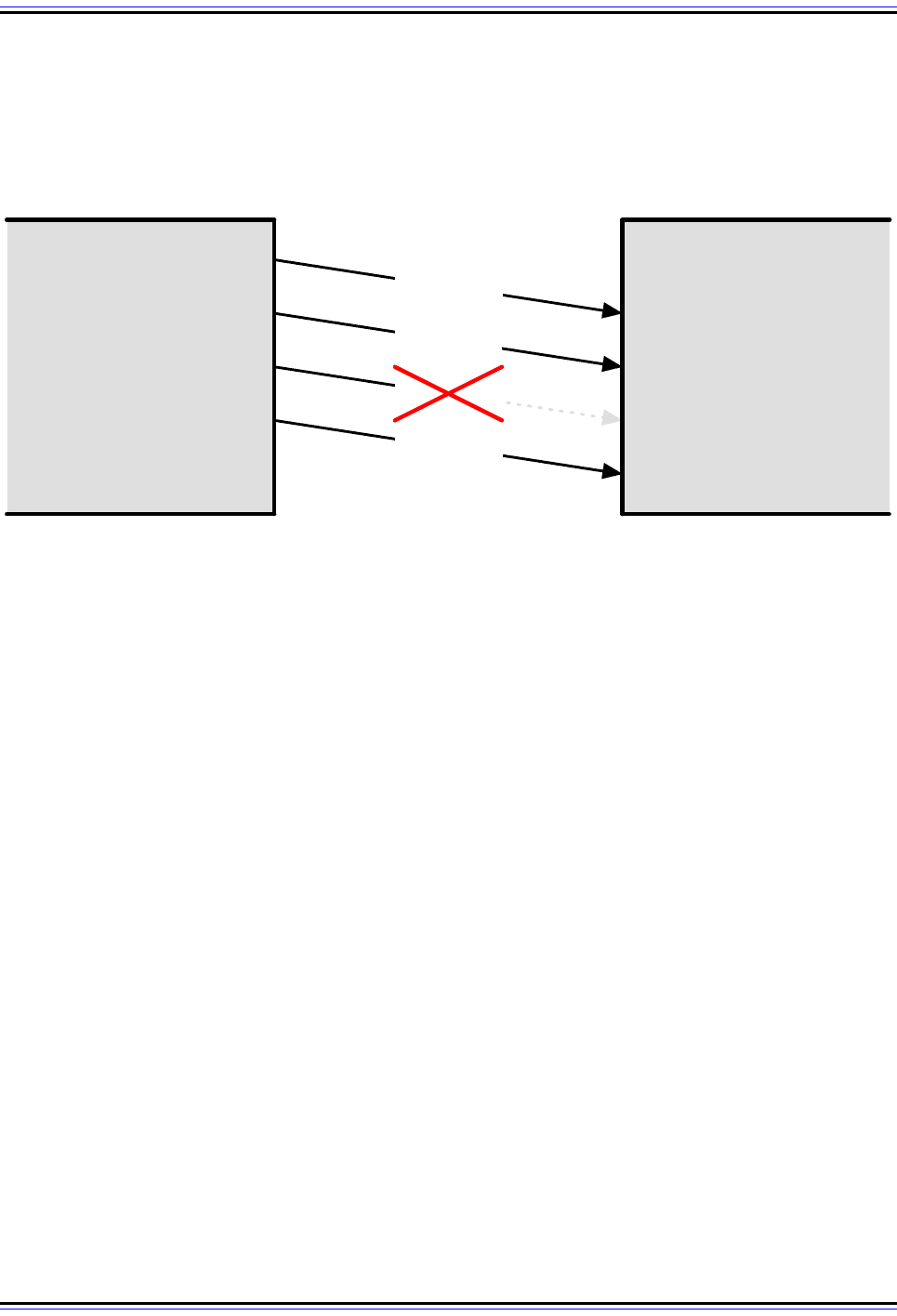
The TCP/IP Guide - Version 3.0 (Contents) ` 850 _ © 2001-2005 Charles M. Kozierok. All Rights Reserved.
discussion.) A datagram is sent and it may or may not get there, but the transmitter will
never have any way of knowing because no mechanism for feedback exists. This is shown
conceptually in Figure 203.
Providing Basic Reliability Using Positive Acknowledgment with Retransmission
(PAR)
Basic reliability in a protocol running over an unreliable protocol like IP can be implemented
by closing the loop so the recipient provides feedback to the sender. This is most easily
done with a simple acknowledgment system. Device A sends a piece of data to Device B.
Device B, receiving the data, sends back an acknowledgment saying, “Device A, I received
your message”. Device A then knows its transmission was successful.
Of course, since IP is unreliable, that message may in fact never get to where it is going.
Device A will sit waiting for the acknowledgment and never receive it. Conversely, it is also
possible that Device B gets the message from Device A, but the acknowledgment itself
vanishes somehow. In either case, we don't want Device A to sit forever waiting for an
acknowledgment that is never going to ever arrive.
To prevent this from happening, Device A starts a timer when it first sends the message to
Device B, which allows sufficient time for the message to get to B and the acknowledgment
to travel back, plus some reasonable time to allow for possible delays. If the timer expires
before the acknowledgment is received, A assumes there was a problem and retransmits
its original message. Since this method involves positive acknowledgments (“yes, I got your
message”) and a facility for retransmission when needed, it is commonly called (ta-da!)
positive acknowledgment with retransmission (PAR), as shown in Figure 204.
Figure 203: Operation Of An Unreliable Protocol
In a system such as that used by IP, if it gets there, great; otherwise, nobody will have a clue. ☺ Some
external mechanism is needed to take care of the lost message, unless the protocol doesn’t really care
whether a few bits and pieces are missing from its message stream.
Device A
Message
Device B
Send Message
Receive MessageSend Message
Receive MessageSend Message
Message LostSend Message
Receive Message
Message
Message
Message
